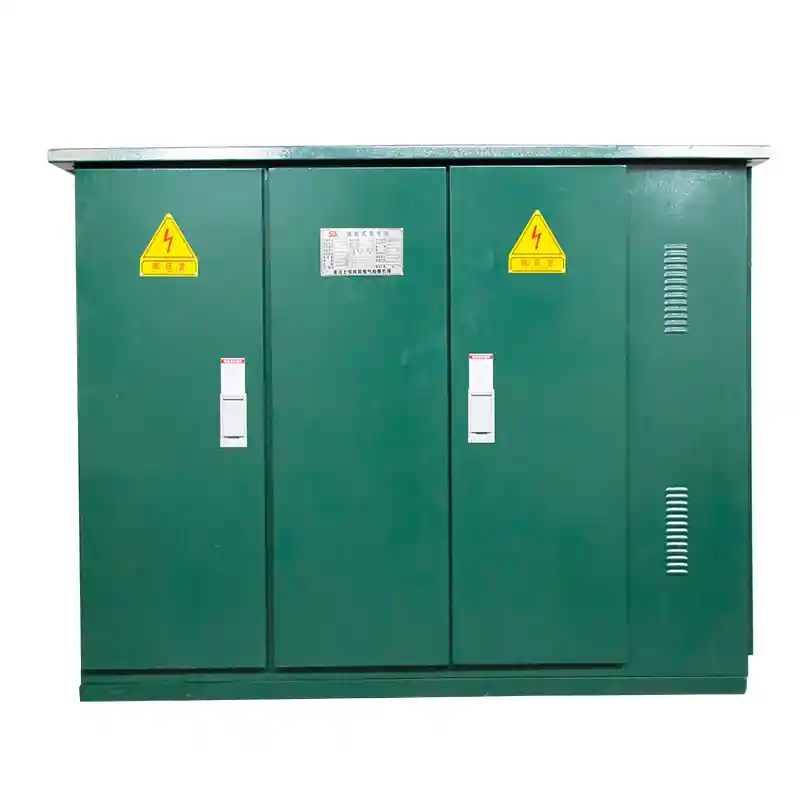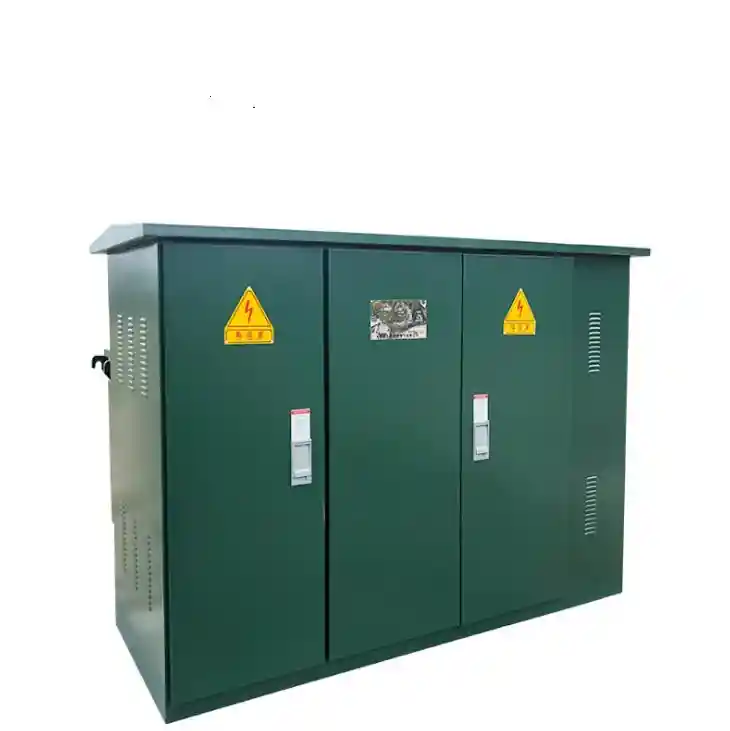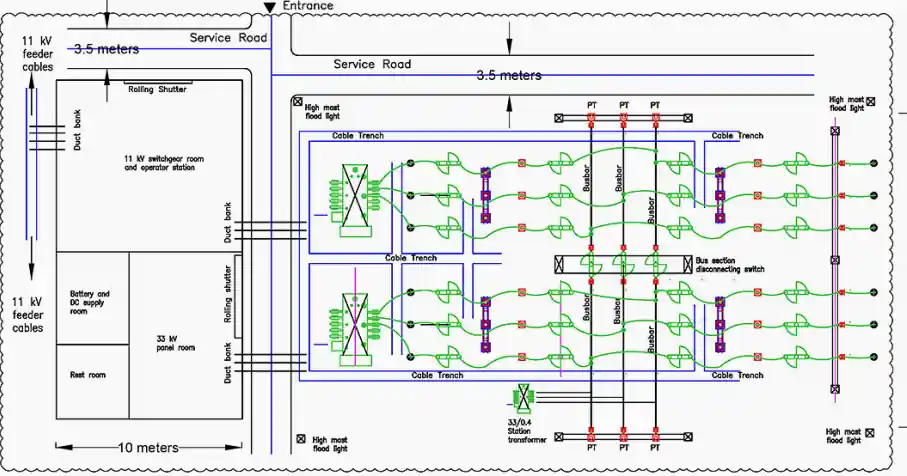- Hvad er en 33kV Compact Substation?
- Anvendelser af 33kV kompakte transformatorstationer
- Industriens baggrund og markedstendenser
- Tekniske specifikationer - Typisk konfiguration for en 33kV kompakt understation
- Sammenligning med konventionelle transformatorstationer
- Købsrådgivning og tips til udvælgelse
- Autoritative referencer
- Ofte stillede spørgsmål (FAQ)
I takt med at kravene til elektricitet vokser i industri- og bylandskaber, er den kompakte 33 kV transformerstation opstået som en pålidelig og pladsbesparende løsning. Denne præfabrikerede enhed er designet til at håndtere mellem- og højspændingsdistribution med sikkerhed og minimalt fodaftryk og integrerer flere komponenter - højspændingskoblingsudstyr, strøm Guide til transformatorog lavspændingsfordelingspanel - i et vejrbestandigt kabinet.

Hvad er en 33kV Compact Substation?
En 33kV kompakt transformerstation, også kaldet en pakke- eller kiosktransformerstation, er en modulær elektrisk enhed, der nedtrapper spændingen fra 33kV til brugbare niveauer som 11kV eller 0,4kV. Den omfatter:
- HV-koblingsanlæg (som en ring-hovedenhed) til netindgang
- Strømtransformator, oliedæmpet eller tør type, til spændingskonvertering
- LV-fordelingstavle til endelig strømfordeling og kredsløbsbeskyttelse
Dette selvstændige design reducerer installationstiden, forbedrer sikkerheden og sikrer kompatibilitet med smart grid-systemer.

Anvendelser af 33kV kompakte transformatorstationer
Takket være deres skalerbarhed og robuste design anvendes 33 kV kompakte transformerstationer i vid udstrækning:
- Elforsyningsselskaber: Som distributionsknudepunkter i 33kV-netværk
- Industrielle anlæg i stor skala: Til maskiner, automatiseringslinjer og procesudstyr
- Infrastruktur i byer: Leverer elektricitet til metrosystemer, hospitaler, lufthavne og højhuse
- Steder med vedvarende energi: Bruges ofte i sol- og vindmølleparker som en del af nedtrapningsinfrastrukturen
- Smarte byer: Understøttelse af underjordiske kabelnetværk og energieffektive arkitekturer
Industriens baggrund og markedstendenser
I takt med at den globale energiinfrastruktur bevæger sig i retning af decentralisering og integration af vedvarende energi, vokser efterspørgslen efter kompakte transformerstationer støt. Ifølge en rapport fra 2023 fra Det Internationale Energiagentur (IEA)Modulære transformerstationer er afgørende for moderniseringen af forsyningsnetværk på grund af deres hurtige udrulning og minimale forberedelse af stedet.
IEEE's seneste publikationer har også understreget de kompakte transformerstationers rolle i at forbedre strømkvalitet, pålidelighedog Isolering af fejl i mellemspændingssystemer.
I mellemtiden har producenter som ABB, Schneider Electricog Siemens har fremmet modulære designs i overensstemmelse med standarderne IEC 62271 og IEEE C37.20.1, som forbedrer den globale interoperabilitet og sikkerhedsoverholdelse.
Tekniske specifikationer - Typisk konfiguration for en 33kV kompakt understation
| Parameter | Specifikation |
|---|---|
| Nominel spænding (primær) | 33kV |
| Nominel spænding (sekundær) | 11kV / 0,4kV |
| Nominel kapacitet | 500 kVA - 2500 kVA |
| Transformertype | Olie-nedsænket / tør type |
| Køletype | ONAN / ANAF |
| Beskyttelsesklasse | IP44 til IP54 |
| Frekvens | 50Hz / 60Hz |
| Standarder | IEC 62271-202, IEEE C57.12.28 |
| Installationstype | Udendørs/indendørs |

Sammenligning med konventionelle transformatorstationer
| Funktion | 33kV kompakt understation | Traditionel udendørs understation |
|---|---|---|
| Installationstid | Kort (plug-and-play) | Lang (kræver anlægsarbejde) |
| Krav til plads | Lav (modulær) | Høj |
| Sikkerhed | Høj (helt lukket) | Moderat |
| Mulighed for flytning | Let at flytte | Fast infrastruktur |
| Behov for vedligeholdelse | Lavere | Højere |
Disse fordele gør 33kV kompakte transformerstationer særligt attraktive til hurtigt voksende infrastrukturprojekter eller fjerntliggende anvendelser, hvor konventionelle transformerstationer er mindre mulige.
Købsrådgivning og tips til udvælgelse
At vælge den rigtige 33kV kompakte transformerstation kræver et nøje kig på:
- Krav til belastning: Tilpas kapaciteten (f.eks. 1000 kVA vs. 2000 kVA) til spidsbelastningen
- Forhold på stedet: I kystnære, støvede eller industrielle områder skal der sikres passende IP-klassificering og korrosionsbestandige kabinetmaterialer.
- Præference for køling: Olie-nedsænkede enheder giver højere overbelastningskapacitet; transformatorer af tør type er renere og sikrere til indendørs brug
- Overensstemmelse: Kontrollér, at produktet opfylder IEC eller IEEE standarder og bærer ISO9001 certificering
- Leverandørens omdømme: Anerkendte leverandører som f.eks. PINEELE, ABBeller Schneider give bedre livscyklusstøtte og dokumentation
Autoritative referencer
For at sikre pålidelighed og overholdelse skal du henvise til følgende standarder og kilder:
- IEC 62271-202 - Højspændingskoblingsanlæg og kontrolanlæg til præfabrikerede transformerstationer
- IEEE C37.20.1 - Standard for metalindkapslede koblingsanlæg
- IEEMA-håndbog om distributionstransformatorer - For relevans på det indiske marked
- Whitepapers fra ABB, Schneider Electricog Siemens om modulære transformerstationsteknologier
- Wikipedia - Understation: Generelt overblik og global kontekst
Ofte stillede spørgsmål (FAQ)
Ja. Mange enheder er designet med dobbelte sekundærviklinger eller parallelle transformere til at understøtte både mellem- og lavspændingsudgange.
Produktion og levering tager typisk 6-10 uger, mens installationen på stedet kan klares på 3-5 dage, afhængigt af om fundamentet er klar.
Helt sikkert. Mange solcelleparker bruger 33kV transformerstationer til at nedtrappe spændingen, før de sender strøm ind i nettet. De er kompatible med invertere og SCADA-systemer.
Den 33kV guide til kompakt transformerstation er et pålideligt, effektivt og fremtidsklart valg til moderne elektriske distributionsbehov. Med sit lille fodaftryk, robuste design og sømløse integrationsmuligheder betjener den industrier, forsyningsselskaber og infrastrukturprojekter, der kræver hastighed, sikkerhed og skalerbarhed. Med internationale standarder og gennemprøvede producenter i ryggen fremstår den som en praktisk løsning i nutidens strømhungrende verden.


